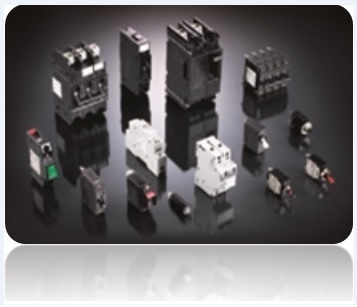Circuit Breaker

Circuit Breakers are mechanical overcurrent circuit protection devices. They trip or open a circuit when excess current runs through the device. Circuit Breakers are used to protect a broad range of equipment and systems such as motors, transformers, telecommunication equipment, computers, industrial automation, air-conditioning, power distribution, variable speed drives, industrial control panels and other industrial equipment systems. They are also used in low voltage battery powered distribution circuits found in heavy duty vehicles, car, boats, aircraft and off-road vehicles. There are three basic types of circuit breakers.
Hydraulic Magnetic Circuit Breakers have an electromagnetic coil, an iron core sealed in a tube filled with hydraulic fluid, a spring loaded actuator and two electrical contacts. When excessive current from an overload runs through the device, the electromagnetic field in the coil is increased which moves the iron core through the tube and causes the spring loaded actuator to trip, separating the contacts and opening the circuit. Opening speed is determined by the viscosity or thickness of the hydraulic fluid.
Thermal Circuit Breakers are tripped by a thermally sensitive bimetal strip. Heat from a current overload deforms the metal strip and trips an actuator which opens the circuit.
Thermal Magnetic Circuit Breakers utilize a bimetal strip to open the circuit in an overcurrent condition and an electromagnetic coil to open the circuit in a short circuit condition